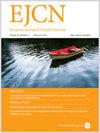生长迅速与否的婴儿因脂肪量变化而导致的体重增加比例。
IF 3.6
3区 医学
Q2 NUTRITION & DIETETICS
引用次数: 0
摘要
背景:大量证据表明,婴儿体重增长过快会增加儿童肥胖的风险,但这通常只基于儿童时期的体重指数(BMI),至于这是否是因为体重增长过快的婴儿会积累更多的脂肪,目前尚不清楚:我们研究的主要目的是测试体重增加过快的婴儿与生长正常的婴儿相比,是否因脂肪量同时增加而导致婴儿体重增加的比例更大:方法:对来自澳大利亚、印度和南非的 342 名婴儿在 0 个月和 6 个月时的身体成分进行了评估,评估方法包括:(1) 空气位移胸透(ADP);(2) 来自巴西、巴基斯坦、南非和斯里兰卡的 555 名婴儿在 3 个月和 24 个月时的氘稀释(DD)。体重增长和身长增长均以+0.67 Z分数为临界值,分为缓慢增长、正常增长和快速增长。采用回归法估算和对比脂肪量变化引起的体重变化百分比:结果:0 至 6 个月期间平均体重增加的约 40%,3 至 24 个月期间平均体重增加的 20%是由于脂肪量的增加。在这两个样本中,与正常组相比,体重增长快的婴儿因脂肪量增加而导致的体重增长比例平均较高,而体重增长慢的婴儿则较低,但个体差异很大。相反,身长增长缓慢和快速与脂肪量增长的差异无关:结论:儿科医生在监测婴儿生长时应认识到,体重百分位数上升通常伴随着更大的脂肪增长(而不仅仅是更高的体重指数),而身长百分位数上升则不伴随着更大的脂肪增长。本文章由计算机程序翻译,如有差异,请以英文原文为准。

The proportion of weight gain due to change in fat mass in infants with vs without rapid growth
There is extensive evidence that rapid infant weight gain increases the risk of childhood obesity, but this is normally based on childhood body mass index (BMI) only and whether or not this is because infants with rapid weight gain accrue greater fat mass is unknown. The primary objective of our study was to test whether the proportion of infant weight gain due to concurrent increases in fat mass is greater in infants with rapid weight gain as compared to those with normal growth. Body composition was assessed by (1) air-displacement plethysmography (ADP) at 0 and 6 months in 342 infants from Australia, India, and South Africa and (2) deuterium dilution (DD) at 3 and 24 months in 555 infants from Brazil, Pakistan, South Africa, and Sri Lanka. Weight gain and length growth were each categorized as slow, normal, or rapid using cut-offs of <−0.67 or >+0.67 Z-scores. Regression was used to estimate and contrast the percentages of weight change due to fat mass change. Approximately 40% of the average weight gain between 0 and 6 months and 20% of the average weight gain between 3 and 24 months was due to increase in fat mass. In both samples, compared to the normal group, the proportion of weight gain due to fat mass was higher on average among infants with rapid weight gain and lower among infants with slow weight gain, with considerable individual variability. Conversely, slow and rapid length growth was not associated with differential gains in fat mass. Pediatricians should monitor infant growth with the understanding that, while crossing upward through the weight centiles generally is accompanied by greater adiposity gains (not just higher BMI), upward crossing through the length centiles is not.
求助全文
通过发布文献求助,成功后即可免费获取论文全文。
去求助
来源期刊
CiteScore
10.60
自引率
2.10%
发文量
189
审稿时长
3-6 weeks
期刊介绍:
The European Journal of Clinical Nutrition (EJCN) is an international, peer-reviewed journal covering all aspects of human and clinical nutrition. The journal welcomes original research, reviews, case reports and brief communications based on clinical, metabolic and epidemiological studies that describe methodologies, mechanisms, associations and benefits of nutritional interventions for clinical disease and health promotion.
Topics of interest include but are not limited to:
Nutrition and Health (including climate and ecological aspects)
Metabolism & Metabolomics
Genomics and personalized strategies in nutrition
Nutrition during the early life cycle
Health issues and nutrition in the elderly
Phenotyping in clinical nutrition
Nutrition in acute and chronic diseases
The double burden of ''malnutrition'': Under-nutrition and Obesity
Prevention of Non Communicable Diseases (NCD)

 求助内容:
求助内容: 应助结果提醒方式:
应助结果提醒方式:


